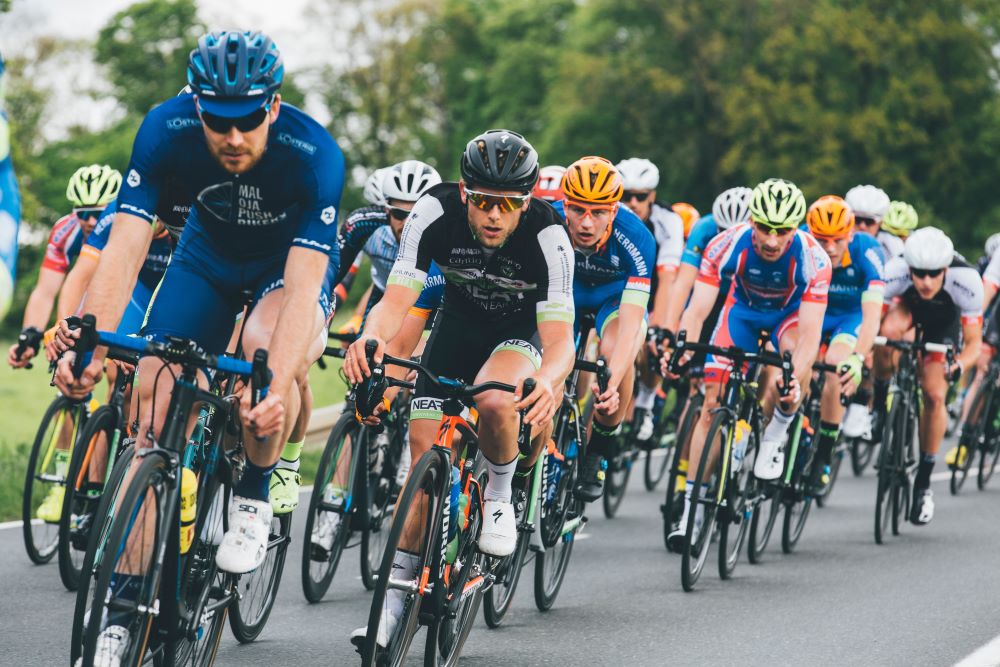Heart Rate Variability (HRV) What is it and how can it help you train?
Heart rate variability (HRV) is something which is being mentioned increasingly often when it comes to cycling training and recovery. But what exactly is HRV and how can it impact on our training as athletes? We spoke to our head coach Kevin Henderson to get the low down.
can you give us a basic explanation of what Heart Rate Variability is?
Heart rate variability is the change in time between the individual beats of your heart. You might assume that if your heart rate is 60 beats per minute that it’s beating once every second. Actually the time between the beats changes. Sometimes there may be over one second between beats, sometimes there may be less. This variation is known as heart rate variability or HRV.
As you become fitter your HRV will typically trend upwards but a number of factors can cause it to decrease. Training at high intensity will cause a decrease the following day, as will a poor quality nights sleep, poor nutrition and even mental or emotional stresses.
So why is knowing your HRV important?
The research shows that the greater your HRV the more ready your body is to perform athletically. Knowing your HRV in isolation is of little use but when you start to track it over time it can be used as a good indicator of your readiness to train, you can then begin to factor this into your training regime.
The accumulation of incomplete training recovery leads to impaired performance and increased likelihood of injury. So you can use HRV to guide you on when it’s best to reduce the intensity of a planned workout or even have a recovery day.
There’s also evidence to suggest there is a relationship between low HRV and depression, anxiety and an increased risk of cardiovascular disease. So it can also have big ramifications outside of your cycling performance.
There is much more to recovery these days than just having a protein shake.

What do people need to do to start measuring their HRV?
There’s a number of different ways you can get started. One of the companies that has helped grow awareness of HRV is Whoop. They make a dedicated fitness band that uses HRV and other factors to give you a daily ‘recovery’ score but you can actually begin to measure HRV with equipment you likely already have.
The easiest method is to use exactly the same heart rate monitor like you use for your cycling or running. Link it to a free HRV app on your phone (EliteHRV is the most popular one). Start your day by taking measurements when you wake up a few times each week and the app will help you monitor any changes.
How do you use HRV with the athletes you coach?
Heart rate variability can help with coaching in a variety of ways. It can certainly help highlight overtraining before any burnout or injuries occur but as an experienced coach this is something I’m well versed in avoiding.
I find HRV is a great way to balance an athlete’s lifestyle and training. All of the data we normally receive is training related and does not take into account life stresses outside of training. For example work, family stress and sleep quality. HRV breaks through this barrier and gives us a greater insight to an athlete’s overall wellness. We can then use to guide the direction the training is going.
For example if an athlete has not been training hard but their HRV remains low it can prompt a conversation around their nutrition, or perhaps something that is stressing them outside of their athletic pursuits. I can then either look to modify their training plan or give some nutrition tips.
We use TrainingPeaks to log and track athletes’ HRV alongside all of their other data. Athletes often overlook the impact other aspects of their life can have on their athletic performance. It’s incredibly useful to have data that can back this up.

How can athletes improve their HRV?
There isn’t one silver bullet that is going to improve your HRV. You need to look at it more holistically and take steps across a number of different aspects of your routine. Some of these are obvious; avoiding training while fatigued, staying well hydrated, eating a healthy diet and sleeping well all positively contribute.
Drinking alcohol is one of the habits that can have the biggest negative effect on your HRV. In some cases suppressing your heart rate variability for days afterwards so it’s best avoided if possible.
There are also a range of things you can do to improve heart rate variability that might not seem as obvious. Keep a regular pattern to your eating habits, avoiding food 3-4 hours before sleep. This helps your body focus on recovery rather than digestion and has a knock on positive effect on HRV. Also intentional breathing exercises, mindfulness and meditation have all been shown to reduce stress and increase your heart rate variability.
Get in touch with Blackzone Coaching and learn more about how a tailored coaching programme can help you master every element of your fitness.